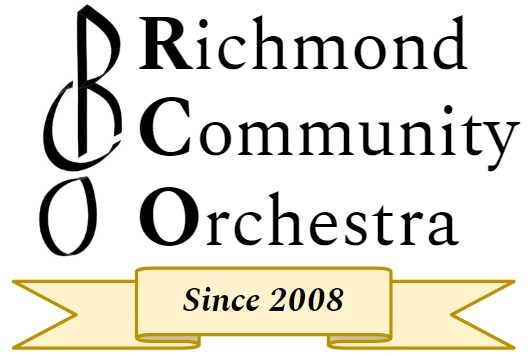Sunday, March 10 * 3:30 p.m.
Goddard Auditorium, Earlham College
Richmond, IN
Waltz from Sleeping Beauty * Pyotr Tchaikovsky
Joyeuse March * Emmanuel Chabrier
Scherzo from Symphony #4 * Anton Bruckner
Pavane, Op. 50 * Gabriel Faure
The Depot * Jay Conard
Russian Easter Overture * Nikolai Rimsky-Korsakov
Finale from Pines of Rome * Ottorino Respighi
Waltz from Sleeping Beauty * Pyotr Tchaikovsky, 1840-1893
Sleeping Beauty was written in 1889 between two other famous ballets, Swan Lake and The Nutcracker. The complete ballet is nearly four hours long. This waltz is in the first act as the villagers celebrate the 16th birthday of Princess Aurora. Many of you will recognize it from the Walt Disney movie.
Joyeuse March * Emmanuel Chabrier, 1841-1894
Arr. David Stone
Written in 1884, this piece started as a work for piano. Chabrier studied law at his parents’ insistence and was a civil servant in Paris until he finally became a full-time musician and composer at age 39. He died relatively young at the age of 53. With its many rhythmic starts and stops, this joyful piece was once described as an inebriated band stumbling down the street.
Scherzo from Symphony #4 * Anton Bruckner, 1824-1896
Bruckner was a composer and teacher in Austria during the late Romantic period. He wrote many symphonies and sacred music and was known for his use of low brass and the length of his symphonies. This scherzo (third movement) comes from his Symphony #4, which he referred to as the “Romantic.” With all the brass currently in the RCO, this is a great chance for them to shine. It has a hunting horn motif with a melodic trio in the middle that represents the lunch break during the hunt.
Pavane, Op. 50 * Gabriel Faure, 1845-1924
A pavane is a 16th-century Spanish court dance. Written in 1887, this beautiful, haunting melody was dedicated to Faure’s patron, Elisabeth, Comtesse Greffulhe. His original concept was of the men standing on one side talking about the women and the women standing on the other side talking about the men (something like a junior high dance). When they do finally start dancing, they end up stepping on each others’ toes and yelling at each other; you’ll hear the music change from the peaceful melody to a big, full sound. This would all sound very absurd except for the fact that it is sung in French. Its first performance was just the orchestral parts as you hear today, and the second used singers. Faure’s concept was to use dancers as well, which were incorporated into the third performance. Rarely will you find a recording with voices, however.
The Depot * Jay Conard, 1958-
This is a musical tour of the Richmond Depot around 1919. After the sunrise, we hear a family “Heading for the Depot” (perhaps in their new automobile) to see their brother off on the morning train. Once “Inside the Depot,” we dodge baggage carts and passengers coming and going until we see an incoming train approach the platform. There we spot the outgoing engine as “The Train Starts.” We hear the pinging of its metal skin as the steam heat inside expands the metal. We hear some machinery screech and the steam whistle toot (flutes) as pressure builds for the “Train Heading Out.” The wheels turn faster and faster as the train leaves the station, and as it moves farther away, we hear the steady clacking on the tracks until it disappears. As we look around, we notice a soldier saying “Farewell” to his sweetheart as they plan for the future when he returns. Our attention shifts to the sound of the “Arrival” of another train, this one carrying father after a week-long trip. When the train stops with a giant hiss of escaping steam, we see people step off the train as we “Welcome Home” father. All that’s left now is for our “Heading Home.”
Russian Easter Overture * Nikolai Rimsky-Korsakov, 1844-1908
Arr. Sandra Dackow
First performed in 1888, this concert overture uses many chants and tunes that would be familiar to those in the Orthodox Church. It opens with a simple chant melody in the upper woodwinds followed by a cadenza in the solo violin. Soon the excitement and pageantry of this important feast takes over with fast-moving melodies and lots of brass. Later on, the trombone takes on the role of a chanting monk as if reminding the listener of the solemn day. Soon the quick tempo returns and builds to a big finish with a time signature of 2/1–meaning two beats in each measure with the whole note getting one count.
Finale from Pines of Rome * Ottorino Respighi, 1879-1936
Arr. Stephen Bulla
The Pines of Rome is the title of a four-movement tone poem about the iconic pine trees that grow around the capital of Italy. We are playing the final movement, called “The Pines of the Appian Way.” While the other movements describe sites still known in Respighi’s day, the finale depicts the ancient Roman legions marching triumphantly home along this famous highway, built in 312 B.C. We hear the tramping of the soldiers along this road that connects Brindisi (in the heel of the Italian boot) on the Adriatic Sea to the Eternal City. You faintly hear the approaching legions at the beginning with the exotic sounds of eastern lands, played on the English horn. Soon the French horns announce the approach of the marching legions carrying their spoils of conquest.
